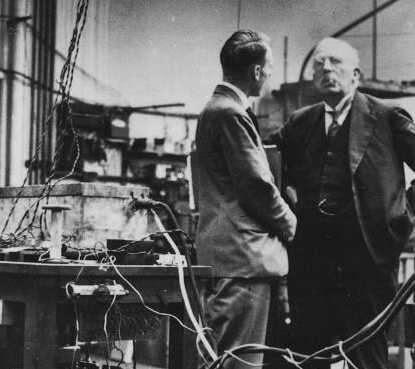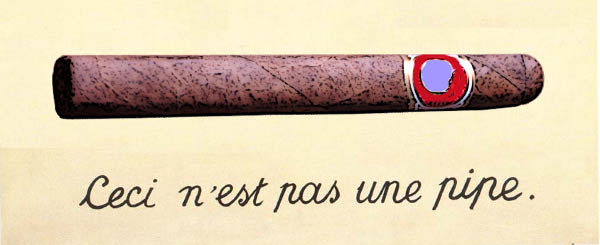Smoke and Mirrors
August 19, 2010
Tobacco smoking is uniformly prohibited in modern laboratories. In chemistry laboratories, there's the problem of flammable and explosive solvents. Physics laboratories contain front-surface mirrors and other delicate optical components that must be kept clean. You wouldn't want your expensive solid state lasers self-destructing because some cigarette soot deposited on their apertures. Many physics laboratories have ultrahigh vacuum systems, and no amount of pumping will expel all the deposited residues of cigarette smoke. In biology laboratories, how can you detect the effects of drugs and chemicals on organisms against a background of toxic compounds in the air? My wife, who worked for many years as a chemist, said that the sensitive gas chromatographs in her laboratory would show extraneous peaks from the airborne traces of cologne or perfume of visitors and coworkers. Imagine the havoc that cigarette smoke would do. Did I mention that smoking is bad for the scientists, too?
Early in the twentieth century, smoking was more common, and some scientists actually smoked in their laboratories. The scientist and his pipe was so common as to be clichéd, but there was also cigarette and cigar smoking. There's a famous photograph of
Ernest Rutherford in a laboratory, puffing on a cigar while talking with
Ernest Walton of
Cockcroft-Walton fame. An important physics experiment would have failed if the experimenter had not been puffing on a cheap cigar at the time. This was the 1922
Stern-Gerlach experiment, and the cigar smoker was
Otto Stern.

Ernest Rutherford in conversation with Ernest Walton.
The Stern-Gerlach experiment, which proved that matter has quantum mechanical properties, is relatively easy by today's standards. At the time of the experiment in 1922, most physicists were convinced that light obeyed
quantum mechanics. The working model of the atom, the
Bohr atom, had electrons orbiting in discrete orbits, and in the terminology of the day, this was known as "space quantization." Space quantization had not been experimentally verified. If space quantization were real, then passage of neutral atoms through an inhomogeneous magnetic field would result in a separation of atoms in space that's different from that of a non-quantized atom. The non-quantized atoms would exit the field with random position and paint a normal distribution in space. Quantized atoms would separate in space into two streams. In modern parlance, two streams of atoms instead of one proves that
spin angular momentum is quantized.
To do their experiment, Stern and Gerlach heated
silver in a furnace in a vacuum chamber to evaporate its atoms, and they used a slit to select a narrow angular range of atoms exiting the furnace. These silver atoms passed though a magnetic pole piece, and they deposited onto a glass slide. Viewing the glass slide would show either one patch of silver, or two. Of course, very few silver atoms, probably a
monolayer or less, reach the glass slide, so these atoms would be hard to see. In fact, when the glass slide was removed from the apparatus, nothing was seen. Here's where a cigar becomes an important part of the experiment. As Stern examined the slide, the image of the silver atoms started to appear! He reasoned that
sulfur from the cheap cigars he smoked lingered on his breath, and he was converting the invisible silver atoms to black
silver sulphide, which was visible. This is the same process by which silverware
tarnishes from long-tern exposure to the trace quantity of
hydrogen sulfide that's present in air. A confirmation experiment by Bretislav Friedrich and
Edwin Land (of
Polaroid film fame) showed that it could not have been just Stern's breath. He must have been smoking a cigar at the time.[2] Perhaps Stern wasn't willing to admit he was smoking in the lab.

This is not a painting by René Magritte.
The cigar wasn't the only fortuitous event of this experiment. If Stern and Gerlach had chosen
yttrium instead of silver for their metal, they would have seen four lines instead of their expected two, if the lines were even visible. They would have been utterly confounded, because the atomic theory they had at the time didn't include electron spin, but only the orbital angular momentum.[3] As to where physicists get their inspiration, Stern visited
Einstein in
Prague in 1912 after earning his PhD in
physical chemistry. Their discussions reportedly took place in a café attached to a brothel.[3] Yes, it's the coffee.
References:
- Rutherford image from the Cavendish Laboratory archives, via the Internet Encyclopedia of Science
- Bretislav Friedrich and Dudley Herschbach, "Stern and Gerlach: How a Bad Cigar Helped Reorient Atomic Physics," Physics Today, vol. 56, no. 12 (December, 2003), pp. 54-59.
- Jeremy Bernstein, "The Stern Gerlach Experiment," arXiv (14 July 2010).
Permanent Link to this article
Linked Keywords: Tobacco smoking; Ernest Rutherford; Ernest Walton; Cockcroft-Walton; Stern-Gerlach experiment; Otto Stern; quantum mechanics; Bohr atom;
spin angular momentum; silver; monolayer; sulfur; silver sulphide; tarnish; hydrogen sulfide; Polaroid; René Magritte; yttrium; Einstein; physical chemistry; Prague.